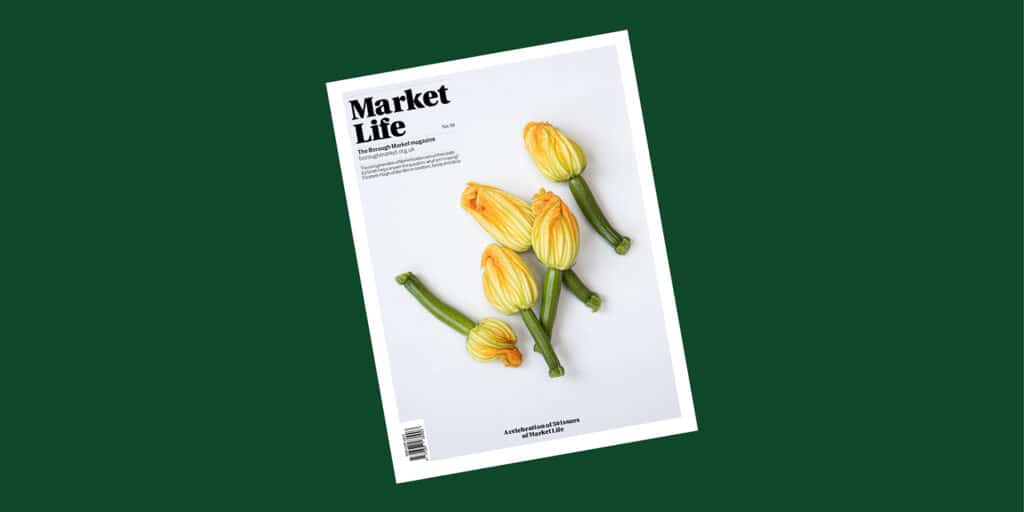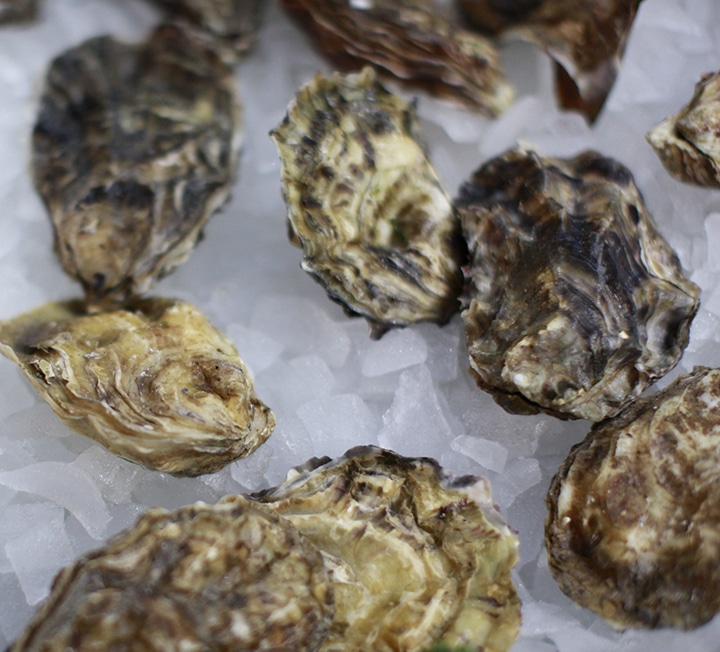What it takes: carving jamón
Eva Garcia of Brindisa on the craft of the ‘cortadora de jamón’


“I HAVE A BRAIN AND TWO HANDS, SO WHY CAN’T A WOMAN CARVE HAM JUST AS WELL AS A MAN?”
Interview: Viel Richardson / Images: Orlando Gili
Have you always wanted to be a jamón carver?
As far back as I can remember, my mother and father carved jamón legs at home, so seeing jamón being carved has always been part of my life. It seems very natural to me. I started to train here about three years ago and loved it from the beginning. In Spain, being a ‘cortadora de jamón’ is seen as a respected career. At every wedding, christening, celebration and festival event you will find someone carving jamón.
Is the sense of tradition important to you?
Yes. I am a proud Spaniard, and this is a very traditional Spanish craft. It makes me feel good to be doing something that connects so deeply with my cultural heritage. But this has traditionally been a job reserved for men, and there were definitely some men who did not approve when I said I wanted to become a cortadora de jamón. One even said: “Are you sure you’re a woman?” My answer to them is that I have a brain and two hands, so why can’t a woman carve ham just as well as a man? Luckily that is changing and there are more female carvers in Spain now. I believe anyone should be allowed to see if they have the skill and passion you need, not just men and not just Spanish people. The man who trained me is Colombian and a very gifted carver.
What is the main aim of the carver?
Achieving the perfect slice on a consistent basis in a way that gets the most out of each leg. Each jamón leg is different, so it is not a case of simply following a set plan. People think the jamón slices have to be as thin as possible, but that is not the case. Each slice needs to be about the depth of a credit card, around two fingers’ width wide and at most two inches long. This is the size that allows you to experience best the combination of flavours and textures.
Is a jamón leg complicated to carve?
Yes, you really need to understand the structure of each leg, where the different muscle groups are located and what their different properties are. The same leg can have four or five different flavours. The part of the leg called the ‘jarrete’ is close to the hoof and doesn’t have a lot of meat. This means as the salt penetrates the leg during the curing process it develops a more intense flavour than other parts. My favourite part of the leg is the ‘caña’. It’s by the tendon. The texture is not the best, but for me the flavour is amazing. Then we have the ‘maza’, the ‘punta’, the ‘babilla’ – all these areas have different textures and it is my job as a carver to present each one at its best.

So there can be a variety of experiences for the customer?
Yes, there can. When I make a plate of ham at the start of each shift at Brindisa, or for events, I like to include slices from all the different areas of the leg so the people can experience the different flavours and textures. Of course, once you have started carving you cannot get to all areas at the same time, but I always get a minimum of two of the cuts in each serving and when I’m making up packets I try to get two or three cuts in each one.
You talk about the jamón with real reverence. Why is that?
Out of respect for the animal and the producers. A jamón leg takes time and care to make well and you need to respect the time and skill involved. You do this by doing your best to get as much product of each leg as possible while maintaining the quality of each slice. Nothing is wasted. Once we have taken off all the slices, we cut the rest of the meat into small cubes. These are full of flavour. You can eat them on their own with beer or wine. You can cook with them – making croquetas, for example – or you can add them to soups and stews.
Is it hard work?
It is physically demanding. I went to the doctor to ask about a lump I noticed on my hand and he said it was simply muscle that had built up through carving for several hours a day. Carving has actually changed the shape of my hand. I had no idea that I had a muscle there!
Do you need any special equipment?
Your most important tool is your knife. While there is no ‘official’ length, it has to be long and flexible. As a cortadora de jamón, you have to keep your knives extremely sharp. You also have to understand the different parts of the knife very well and while carving you will use different sections of the blade to carve different parts of the leg.
What is the most important aspect of the actual carving?
Keeping the blade parallel with the floor – this is critical for getting slices that are the same thickness all the way across. Wherever you are on the leg you have you make sure the knife is parallel, this can sometimes be tricky as the leg is a shape full of slopes and curves. Sometimes you have to cut away a piece of the leg to get the knife into the parallel position. You also have to be very aware of where the knife will go if it slips. Positioning your body, arms and hands is extremely important for safety. The knife is very sharp and a warm jamón leg can get a bit slippery.
What other qualities do you need?
To do this job well, I believe you also need a love of people. Yes, you can carve without it, but a cortadora de jamón is so often part of a celebration. Carving ham has some theatre about it. Engaging with the people you are carving for can make the occasion so much better. This is one of the things I love most about my job. You can see the joy it brings people and the interest it generates about your culture. People are so interested in the jamón: what breed it is, where it came from, how long it was aged for, the best way to enjoy it. For me, that connection is priceless.

Market Life issue 50
The brand-new edition of Market Life includes an interview with Elizabeth Haigh of Mei Mei, recipes from Ed Smith and Kathy Slack, a guide to the art of ham carving, a piece on the new generation of Borough Market traders, and a celebration of our award-winning magazine’s half century.


